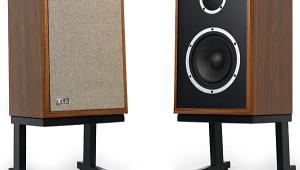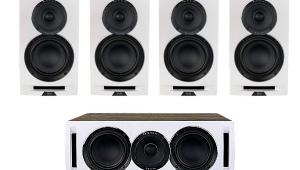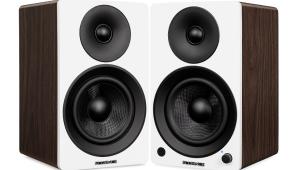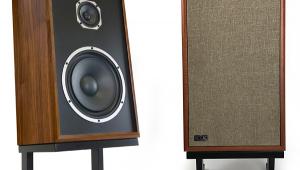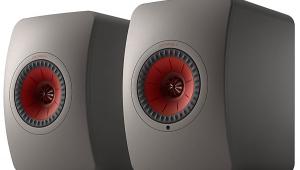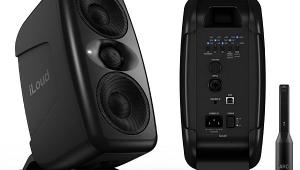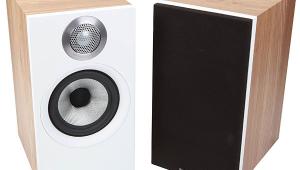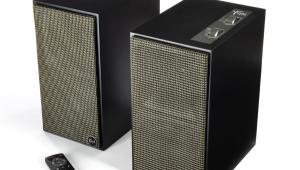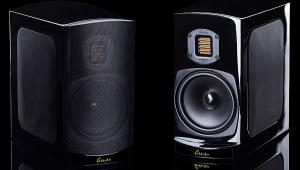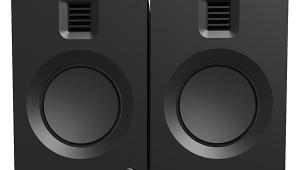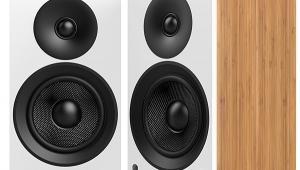Adam Audio GTC77 Speaker System Page 2
One of this system’s most impressive qualities is its intelligibility and legibility at low SPLs. Jeff Bridges mumbles and slurs his way through Crazy Heart in a performance deserving of the Oscar he won for the part he played of a washed-up, drunken country singer. Yet it was easier to understand what he says through this system at low volume than through my very good reference system at normal volume—and it sounded more natural and convincing. When I knuckle-rapped the sides of the GTC77 cabinet, it didn’t indicate the stiffest, best damped boxes I’ve ever encountered.

But the center GTC77’s sonic performance was as free of coloration on voices as I’ve heard from a center-channel speaker. It was devoid of chestiness, heaviness, edge, grain, brightness, and sibilant excess. And it completely avoided the discontinuity some center-channel speakers produce that simultaneously creates an excessively chesty and sibilant quality in dialogue and musical vocals. Some center-channel speakers sound warm but somewhat closed in. Some sound crisp in the best sense of that word (which I don’t like to use), but at the cost of overly prominent sibilants or female voices that often sound shrill. In addition, the GTC77 can whisper or scream and never loses its timbral character or impressive dynamic abilities at both the micro and macro levels. At high SPLs, dynamic compression was never evident.
I expected Crazy Heart’s T-Bone Burnett–produced music tracks to sound great, but I wasn’t prepared for the realistic drum-kit sound this system produced—easily the best I’ve heard in this room. The kick and snare drums exhibited timbral, textural, and dynamic verisimilitude that I’ve rarely experienced in a modestly sized home system. I usually don’t talk during movies, but I yelled out (it was playing loud), “Listen to that drum sound! It’s perfect!” And it was just that: deep, tight, texturally and dynamically convincing, and sized just right. Even my wife agreed.
James Guthrie’s new 5.1-channel SACD remix of Pink Floyd’s Wish You Were Here arrived the other day, so I sat down to listen. Guthrie keeps the action up front initially, so as not to upset longtime listeners familiar with the original stereo mix. And then once he’s lulled you into a false sense of two-channel security, he begins to play. A laugh appeared in the right surround that made me jump up as the adrenaline spiked—not because a sound appeared unexpectedly from the speaker, and not because the sound of a person laughing appeared there. It was because a person laughing appeared there, not connected to the box or the tweeter—that’s how smoothly the X-ART performs. Even when I expected it on the second play, I still nearly jumped out of my skin.
Bountiful Bottom
The system’s low-frequency performance was also among the best I’ve heard, if not the best. If you consider the subwoofer’s modest size and price, that was surprising. The subwoofer produced massive, palpable, dynamically unrestricted, pulsating waves of tuneful, low-frequency, musical energy, along with depth charge–type, room-pressurizing, chest-pressing deep bass on sound effects. The unsubstantiated bursts of unidentifiable bass you get from lesser systems—bass you can hear but not feel, or bass that lacks transient attack—never entered into this system’s low-frequency performance on either music or sound effects. The system’s low-frequency performance on Wish You Were Here was muscular and musically transparent and exhibited nimble rhythm and pacing.
I used the 5.1-channel remix of David Bowie’s Ziggy Stardust to test the system’s snappiness. The drums on this recording don’t have much bottom-end heft, but they always had great transient pop. The GTC77 system didn’t disappoint here, either. The drums, particularly the snare, snapped to attention, while the kick drum remained slightly undernourished, as it should. Bowie’s voice was well focused, three dimensional, and well articulated.
I hope you see Living in the Material World, Martin Scorsese’s superb two-part George Harrison documentary on HBO. It’s magical. I’m glad I got to hear it through this system. Its ability to naturally reproduce and tightly focus voices greatly enhanced the experience and made it sometimes feel as if Harrison was speaking in the room and not through mechanical means. That’s how well this system performed.
Conclusion
When I was assigned this review, I’d never heard of Adam Audio. The speakers aren’t much to look at, nor are they meant to be seen. But on first listen, even after a quick setup, it was immediately obvious that this system was special. It didn’t take much effort to tweak it into sonic and spatial perfection, either, thanks in great part to the tweeter’s smooth, open wide-band performance, as well as having three identical, nearly full-range speakers across the front of the room.

Whatever colorations this system may have were so well hidden, I found myself unable to assign it a position on the bright/dark scale, the hard/soft scale, the thin/rich scale, or the forward/recessed scale. If these speakers have any gross faults, I couldn’t detect them. I found the overall response, at least observationally, to be impressively wideband, smooth, and free of obvious dips or bumps. The system was open, clean, and dynamically effortless on both the micro and macro ends of the scale. It rocked, and it exhibited delicacy and finesse. If the GTC77 system has any weak points, I don’t know what they are. If I were forced to assign it a sonic character, I’d say it’s slightly but smoothly forward.
This system can play very loud and never seemed to run out of dynamic headroom or become stressed in my listening room. In fact, the higher the SPLs, the more exciting it became, with no sonic penalty to pay. It costs a grand total of $6,850—cheap by high-end standards for this kind of experience, and that’s because every dollar spent buys you performance, not visual grace.
If you’re looking for a system to hide behind black cloth, don’t buy one until you listen to this one. If you can deal with relatively large, not particularly attractive black boxes in a more conventional home setting, you ought to have a listen, too. My Eve won’t let me keep the GTC77 system in our living room, but she’s as eager as I am to audition one of Adam’s living-room-friendly ones as soon as possible. If it performs as well as this one did, it will be here to stay.


